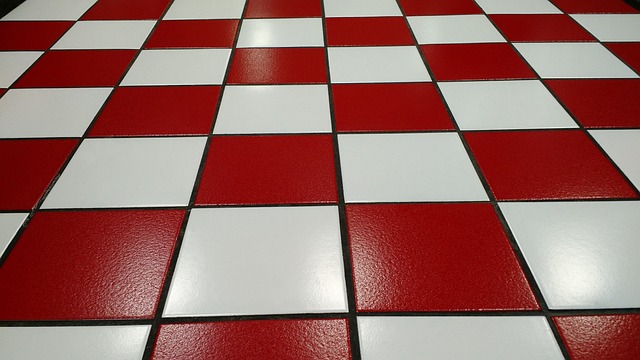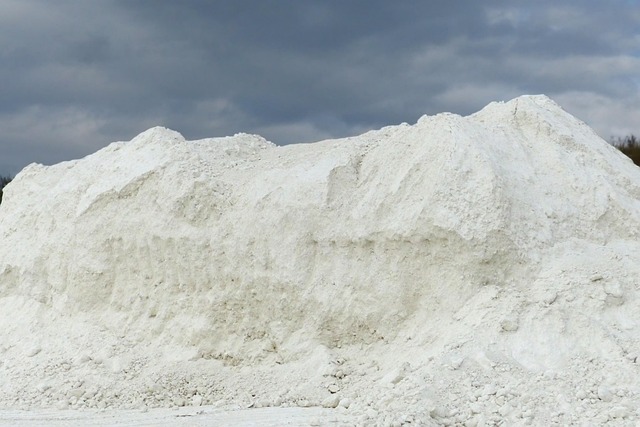Understanding grout stain causes – spills, leaks, mold, mildew, chemical reactions, or poor-quality grout – is crucial for effective removal. The right tools and solutions include high-quality grout cleaning solutions and sturdy brushes with acidic components to break down contaminants. A simple, step-by-step guide emphasizes preparation, scrubbing techniques, and allowing cleaning agents to sit. Avoid harsh chemicals and excessive scrubbing. Natural remedies like baking soda, vinegar, and lemon juice offer gentle options, while chemical solutions are faster but require caution. Regular cleaning with mild detergent prevents future stains, and professional services handle stubborn or widespread cases.
Tired of dealing with unsightly grout stains? Effective grout stain removal is essential for maintaining a clean, vibrant home. Understanding the causes behind these stains is the first step towards achieving a sparkling result. This guide covers everything from identifying stain sources to choosing the right tools and techniques. Learn how to select natural or chemical solutions, avoid common pitfalls, and prolong your grout’s cleanliness. Discover when professional services are necessary for optimal results in grout stain removal.
Understanding Grout Stain Causes

Understanding the causes behind grout stains is a crucial step in effective grout stain removal. Grout, a material typically composed of sand, cement, and water, can become discolored due to various factors. Over time, everyday spills and leaks can leave behind residue that seeps into the grout lines, causing stains. Additionally, mold and mildew thrive in dark, damp spaces within grout, leading to unsightly marks.
Another common culprit is the reaction between grout and certain cleaning products. Some chemicals can degrade the grout material, resulting in discoloration. Moreover, improper sealing or poor-quality grout can make it more susceptible to staining. Identifying the specific cause allows for targeted stain removal methods, ensuring that the grout looks as good as new without causing further damage.
The Right Tools for Grout Stain Removal

When it comes to grout stain removal, the right tools are essential for achieving a clean, professional result. Begin with a good quality grout cleaning solution designed specifically for removing stubborn stains. These solutions typically contain powerful yet safe enzymes or acidic components that can break down and eliminate common grout contaminants like mold, mildew, and mineral deposits.
In addition to the cleaning solution, invest in sturdy brushes with stiff bristles, such as wire brush tools, which are excellent for scrubbing away dirt and dislodging stubborn stains. Soft sponges or cloths can also be useful for applying and rinsing the cleaning agent. For hard-to-reach areas or more severe cases of grout stain removal, consider using specialized tools like grout picks or electric scrubbers to ensure a thorough clean without damaging the grout.
Step-by-Step Guide to Effective Cleaning

Removing grout stains is a crucial step in maintaining your home’s aesthetic appeal, especially in high-traffic areas like kitchens and bathrooms. Here’s a simple, step-by-step guide to effective grout stain cleaning:
1. Preparation: Begin by gathering your tools – a good quality grout cleaner or natural cleaning solution (like baking soda and vinegar), an old toothbrush or grout brush, water, and protective gloves. Protect surrounding surfaces with drop cloths for easy cleanup.
2. Scrubbing: Apply the chosen cleaning agent directly to the stained grout lines. Using the toothbrush or grout brush, gently scrub the stain in a back-and-forth motion. Be thorough but cautious not to damage the grout itself. Let the cleaner sit for 10-15 minutes to allow it to penetrate the stain. For tougher stains, you may need to repeat this process several times.
Common Mistakes to Avoid During Cleaning

When tackling grout stain removal, it’s easy to make mistakes that can prolong staining or even damage your grout. Two common pitfalls to avoid are excessive scrubbing and using harsh chemicals. Aggressive scrubbing can wear down the grout’s protective seal, leading to further discolouration. Similarly, strong chemical cleaners can be too abrasive and strip away the grout’s natural oils, leaving it vulnerable to future stains. Instead, opt for gentle cleaning methods and pH-neutral detergents designed specifically for grout stain removal.
Another mistake to steer clear of is overlooking spot treatments. Addressing stains promptly with targeted cleansers can prevent them from setting deeper into the grout lines. Regular vacuuming and wiping down surfaces can also help mitigate staining over time. Remember, patience is key; allowing adequate drying time between cleanings ensures optimal results without causing damage or discolouration.
Natural and Chemical Cleaning Solutions

When it comes to grout stain removal, there are two primary approaches: natural cleaning solutions and chemical-based methods. Natural remedies offer a gentler approach, utilizing ingredients like baking soda, vinegar, and lemon juice. These substances can effectively loosen and lift stains without harsh chemicals. For instance, creating a paste from baking soda and vinegar can be brushed onto the stained grout, left to soak, then scrubbed away. Lemon juice, known for its citric acid content, is another powerful natural cleaner that cuts through grease, grime, and mineral deposits.
On the other hand, chemical cleaning solutions provide faster results but require caution. Common chemicals like oxygen-based bleach or acid-based cleaners can be highly effective in tackling stubborn grout stains. Oxygen-based bleach, for example, breaks down organic matter and discoloration without leaving harsh residues. However, these chemicals should be used with protective gear and according to the manufacturer’s instructions to avoid damaging the grout or personal health issues.
Maintaining Clean Grout for Longer Periods

Maintaining clean grout is an essential aspect of grout stain removal that extends the life of your tiles and ensures a fresh, appealing look for your space. Regular cleaning plays a crucial role in preventing stains from setting in. Start by sweeping or vacuuming your floors to remove loose dirt and debris, which can cause staining over time. Use a mild detergent or grout cleaner mixed with warm water, applying it to the grout lines with a soft-bristled brush. Rinse thoroughly to eliminate any soap residue, ensuring no film is left behind.
For deeper cleaning, consider using specialized grout stain removal products designed to break down and remove tough stains. Applying these solutions directly to stubborn stains and letting them sit for the recommended time can help lift even the most ingrained grime. Remember, consistent care and prompt cleaning after spills or messes will contribute to maintaining your grout’s cleanliness, making it less prone to staining in the future.
Professional Services: When to Hire Experts

Professional grout stain removal services are often the best course of action when dealing with stubborn or extensive stains. While some minor grout cleaning tasks can be tackled at home, more severe cases require the expertise of professionals. Over time, grout can become discolored due to various factors like dirt, mold, mildew, or even improper sealing. If your grout looks discolored, textured, or has visible stains that won’t budge with DIY methods, it’s time to consider hiring experts.
Professional cleaners have access to specialized equipment and products designed specifically for grout stain removal. They understand the different types of grout and tile, allowing them to choose the most effective cleaning techniques and materials. Plus, professionals offer a deeper clean, ensuring that not only are stains removed but also that your grout is thoroughly disinfected and refreshed.
